Fine wine brokers turn to spirits as Trump duty levies bite
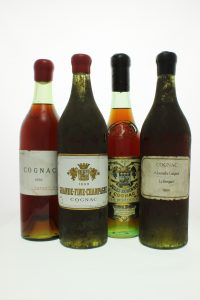 David Baker, Managing Director at Hermitage Cognacs, one of the UK’s leading suppliers of fine and rare cognacs, has noted a real upsurge in interest, demand and sales for Pre-phylloxera era cognacs.
David Baker, Managing Director at Hermitage Cognacs, one of the UK’s leading suppliers of fine and rare cognacs, has noted a real upsurge in interest, demand and sales for Pre-phylloxera era cognacs.
Phylloxera, the aphid which devastated the vineyards of Europe – including its most famous regions of Bordeaux and Burgundy – from around 1863, led to vines being grafted onto American rootstocks which were resistant to it. There was considerable debate In the decades that followed and into the 20th Century as to whether quality of the wines produced after the vine-grafting was quite as high.
Brandies produced from Pre-phylloxera vines are increasingly rare and, according to Baker, becoming very sought after in recent years. The threat to exports of French wines, and single malt Scotch whiskies, to the US due to the US Government’s latest duty tariffs is also encouraging dealers and collectors to look for other liquids to buy.
“As well as our established market in single-estate cognacs of the late 20th and early 21st Centuries, we’re now seeing a real surge in demand for cognacs from the mid and early 20th century, even some from the nineteenth century and before the Phylloxera. Many merchants are worried about the impact of US duty on imports of champagne, wine and whisky into America, and are looking to other spirits to replace that. At the moment cognacs seem to have escaped the duty hikes. In Asia too, especially Singapore, we’re getting greater interest for the oldest Premier cru vintages.
Baker continues: “Many of the Pre-phylloxera cognacs we have supplied this year come from very old estates, some where cognac production may have ceased years ago. The interest and historic value they hold is driving demand, and we are having to scour the cellars of the region for more rare bottles.
“Moreover, modern cognacs are made on bigger stills where volume is important, some of the finest cognacs come from the last half of the nineteenth and first half of the twentieth centuries where family producers had little pressure to produce high cognac volumes.”
Hermitage Cognacs have a great pedigree in supplying very old cognacs – just two years ago an 1805 Cognac Massougnes supplied by them sold through Hedonism Wines in London for over £220,000.
Find out more at hermitagecognac.com
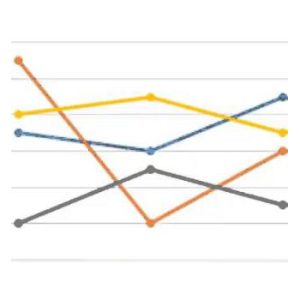 William Grant & Son’s Spirit Trends 2020 Report has identified some key trends in the drinks sector. The report says that there is “an upward shift in spending on more meaningful experiences, driving premiumisation in the spirits industry”. Nearly 90% of consumers are likely to treat themselves in the forthcoming year, supporting the upward trend of luxury brand performances across the On and Off Trade sectors. Authenticity is also key with almost half of UK consumers wanting brands to have a point of view and to stand for something. A heightened access to information and awareness of all matters related to health, has resulted in the customer looking for more transparency and simplicity regarding diet and nutrition. From this report we can see it is becoming more and more important to state exactly what is in the bottle. We have always tried to do this by ensuring that all our Hermitage Cognacs carry age statements.
William Grant & Son’s Spirit Trends 2020 Report has identified some key trends in the drinks sector. The report says that there is “an upward shift in spending on more meaningful experiences, driving premiumisation in the spirits industry”. Nearly 90% of consumers are likely to treat themselves in the forthcoming year, supporting the upward trend of luxury brand performances across the On and Off Trade sectors. Authenticity is also key with almost half of UK consumers wanting brands to have a point of view and to stand for something. A heightened access to information and awareness of all matters related to health, has resulted in the customer looking for more transparency and simplicity regarding diet and nutrition. From this report we can see it is becoming more and more important to state exactly what is in the bottle. We have always tried to do this by ensuring that all our Hermitage Cognacs carry age statements.
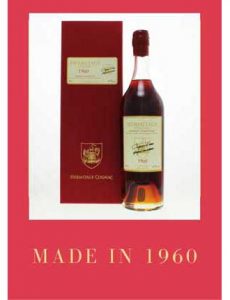 Any bottle of cognac that is date-stamped, is referred to as vintage and this bottle from
Any bottle of cognac that is date-stamped, is referred to as vintage and this bottle from 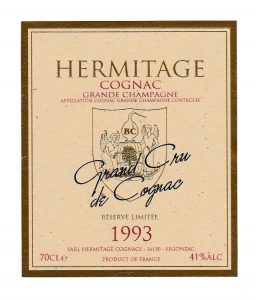 There is often confusion over
There is often confusion over 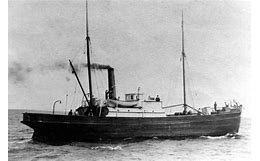 In 1917, SS Kyros set sail for St Petersburg from France. As it approached Sweden, the cargo ship was sunk by a German submarine UC58. For decades the ship was assumed lost but in 1999 it was discovered 77 metres below sea level having been damaged by fishing trawlers and trawl boards. It took 20 years to clear the shipwrecked vessel for exploration, but it was worth the wait as hidden inside were 50 cases of cognac from De Haartman & Co. An exciting and historical find from the time when Tsar Nicholas II was Emperor of Russia. It is difficult to estimate the current condition of the cognac as this will, in part, be dependent on the bottle seals (see
In 1917, SS Kyros set sail for St Petersburg from France. As it approached Sweden, the cargo ship was sunk by a German submarine UC58. For decades the ship was assumed lost but in 1999 it was discovered 77 metres below sea level having been damaged by fishing trawlers and trawl boards. It took 20 years to clear the shipwrecked vessel for exploration, but it was worth the wait as hidden inside were 50 cases of cognac from De Haartman & Co. An exciting and historical find from the time when Tsar Nicholas II was Emperor of Russia. It is difficult to estimate the current condition of the cognac as this will, in part, be dependent on the bottle seals (see  ◊◊ Not only was 2019 a record year with the number of new Hermitage Cognac vintages that we took into stock, the range was also awarded an unprecedented number of GOLD Medals. The Winter 2019 medals were received from the Global Luxury Spirits Masters in November, for
◊◊ Not only was 2019 a record year with the number of new Hermitage Cognac vintages that we took into stock, the range was also awarded an unprecedented number of GOLD Medals. The Winter 2019 medals were received from the Global Luxury Spirits Masters in November, for 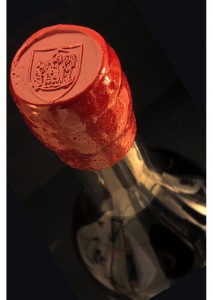 For more than a thousand years cork has been used for sealing wine and spirit bottles. It is a natural product harvested from cork trees which regrow their bark every nine years. It has been revered by traditional wine makers for centuries as the ideal seal. However, the cork seal is not quite so ideal for use with spirits as they can, over the years, degrade the cork. Eventually the cork will turn black and the exposed areas will become so damaged, the cork will drop into the bottle. It is for this reason that cognac producers always advise that bottles should never be laid down for storage. Corks are also porous and allow tiny quantities of air and spirit to pass through, thereby aiding evaporation. Cognac producers have long recognised this problem so today the quality of the seal is much improved. This has been achieved partly by the introduction of semi synthetic cork mixtures and partly by encasing the top of the bottle with some form of capping material.
For more than a thousand years cork has been used for sealing wine and spirit bottles. It is a natural product harvested from cork trees which regrow their bark every nine years. It has been revered by traditional wine makers for centuries as the ideal seal. However, the cork seal is not quite so ideal for use with spirits as they can, over the years, degrade the cork. Eventually the cork will turn black and the exposed areas will become so damaged, the cork will drop into the bottle. It is for this reason that cognac producers always advise that bottles should never be laid down for storage. Corks are also porous and allow tiny quantities of air and spirit to pass through, thereby aiding evaporation. Cognac producers have long recognised this problem so today the quality of the seal is much improved. This has been achieved partly by the introduction of semi synthetic cork mixtures and partly by encasing the top of the bottle with some form of capping material.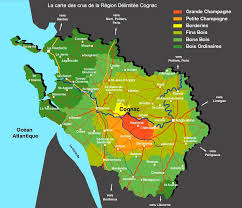 To meet the ever growing demand for
To meet the ever growing demand for  David Baker, Managing Director at Hermitage Cognacs, one of the UK’s leading suppliers of fine and rare cognacs, has noted a real upsurge in interest, demand and sales for
David Baker, Managing Director at Hermitage Cognacs, one of the UK’s leading suppliers of fine and rare cognacs, has noted a real upsurge in interest, demand and sales for 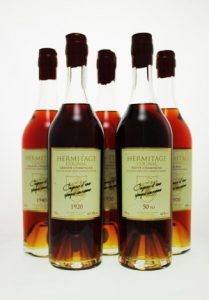 After the festivities of Christmas and New Year’s Eve it is time to look to the year ahead, 2020.
After the festivities of Christmas and New Year’s Eve it is time to look to the year ahead, 2020.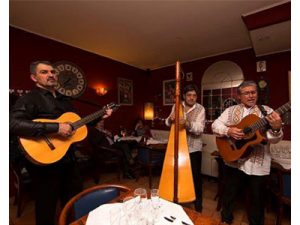 A professor of experimental psychology at the University of Oxford, has said that “venues playing their music too loud are at risk of dulling diners’ taste buds”. He also revealed that “loud music can make it harder to discern a drink’s alcohol content, which may drive diners to buy more booze”. Perhaps certain restaurants are using music to alter diners’ moods – fast food restaurants are known for their high-octane soundtracks which encourage diners to eat quickly and leave. Fergus Henderson of St. John on the other hand has a no music policy at his Farringdon restaurant, and Nigella Lawson believes a thumping soundtrack is “utterly draining and drowns out the taste of the food”. Stephen Harris from The Sportsman probably has it right. He believes the key to a successful restaurant playlist is to pick songs that blend into the background rather than demand to be heard. That does sound like a much more enjoyable dining experience. Interestingly, we have previously reported that wine and spirits are described in a similar way to music, as they have different ‘notes’.
A professor of experimental psychology at the University of Oxford, has said that “venues playing their music too loud are at risk of dulling diners’ taste buds”. He also revealed that “loud music can make it harder to discern a drink’s alcohol content, which may drive diners to buy more booze”. Perhaps certain restaurants are using music to alter diners’ moods – fast food restaurants are known for their high-octane soundtracks which encourage diners to eat quickly and leave. Fergus Henderson of St. John on the other hand has a no music policy at his Farringdon restaurant, and Nigella Lawson believes a thumping soundtrack is “utterly draining and drowns out the taste of the food”. Stephen Harris from The Sportsman probably has it right. He believes the key to a successful restaurant playlist is to pick songs that blend into the background rather than demand to be heard. That does sound like a much more enjoyable dining experience. Interestingly, we have previously reported that wine and spirits are described in a similar way to music, as they have different ‘notes’.